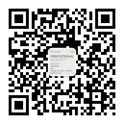| 基金项目:四川省2021—2023年高等教育人才培养质量和教学改革项目(JG2021-1121) |
|
| 摘要点击次数: 243 |
| 全文下载次数: 113 |
| 中文摘要: |
| 目的 分析以培养“卓越医生”为导向的教评法在皮肤性病学临床带教中的应用价值。方法 使用非同期对照研究的方法,选择2020年3月至2022年2月在川北医学院附属医院皮肤性病科进行理论学习和临床见习的实习医学生作为研究对象。根据入科顺序将2020年3月至2021年2月入科的32人归为对照组,2021年3月至2022年2月入科的31人归为试验组。对照组以讲授式教学法进行临床带教,试验组以培养“卓越医生”为导向的教学和评价法进行临床带教。课程结束后,比较两组实习生在理论知识成绩和操作成绩、临床思维能力(采用临床推理与反思自评量表评定)、核心能力(采用迷你临床演练量表评定)、教学满意度方面的不同。应用SPSS 25.0软件进行独立样本t检验、Mann-Whitney U检验、卡方检验和秩和检验。结果 对照组1人主动退出研究,试验组1人未完成实习内容,最终对照组31人、试验组30人进入本次研究。实习4周时,试验组理论知识成绩(88.00±4.30)分和操作成绩(91.87±3.99)分均高于对照组(85.71±4.12)分、(88.23±3.84)分,两组比较差异有统计学意义(t=2.12、3.63,P=0.040、<0.05)。实习4周时,试验组信息系统化评分(47.23±3.11)、分析问题评分(34.87±2.30)、寻找真相评分(16.30±1.49)、反思能力评分[3.50(3.00,4.00)]及临床推理与反思自评量表(self-assessment of clinical reflection and reasoning,SACRR)总分(101.87±4.47)均高于对照组(45.16±3.00)、(31.29±2.30)、(14.45±1.52)、3.00(3.00,3.00)、(93.90±4.47),两组比较差异有统计学意义(t/Z=2.65、6.17、4.79、3.15、6.96,均P<0.05)。实习4周时,试验组核心能力整体优于对照组(Z=2.12,P=0.030);试验组课堂教学评分(20.17±1.98)、临床实践评分(19.83±2.10)、学习计划评分(18.63±2.24)、教学资源评分(20.07±1.82)及总分(78.70±3.67)均高于对照组(18.45±2.23)、(17.65±2.17)、(17.03±2.15)、(18.58±2.00)、(71.71±4.13),两组比较差异有统计学意义(t=3.17、4.00、2.85、3.04、6.98,P<0.05)。结论 皮肤性病学临床带教中应用以培养“卓越医生”为导向的教学和评价法可提高实习生临床理论知识、实践操作能力、临床思维能力和核心能力,同时利于教学质量的改进,值得在临床中推广应用。 |
| 英文摘要: |
| Objective To investigate the application value of the teaching evaluation method guided by cultivating "excellent doctors" in the clinical teaching of dermatology and venereology.Methods A non-simultaneous control study was conducted, and the medical students who received theoretical learning and clinical internship in Department of Dermatology and Venereology, Affiliated Hospital of North Sichuan Medical College, from March 2020 to February 2022, were enrolled as subjects. According to the order of enrollment, 32 students who were enrolled from March 2020 to February 2021 were set up as control group, and 31 students who were enrolled from March 2021 to February 2022 were set up as experimental group. The students in the control group received lecture-based learning, and those in the experimental group received clinical teaching using a teaching and evaluation method guided by cultivating "excellent doctors". After the course ended, the two groups were compared in terms of the scores of theoretical knowledge and operation skills, clinical thinking ability [Self-Assessment of Clinical Reasoning and Reflection (SACRR)], core competence [Mini-Clinical Evaluation Exercise (Mini CEX)], and degree of satisfaction with teaching. SPSS 25.0 software was used to perform the independent samples t-test, the Mann-Whitney U test, the chi-square test, and the rank sum test.Results One student in the control group voluntarily withdrew from the study, and one student in the experimental group did not complete the contents of internship. Finally, 31 students in the control group and 30 in the experimental group were included in the study. After 4 weeks of internship, compared with the control group, the experimental group had significantly higher scores of theoretical knowledge (88.00±4.30 vs. 85.71±4.12, t=2.12, P=0.040) and operation skills (91.87±3.99 vs. 88.23±3.84, t=3.63, P<0.05). After 4 weeks of internship, compared with the control group, the experimental group had significantly higher information systematization score (47.23±3.11 vs. 45.16±3.00), analysis problem score (34.87±2.30 vs. 31.29±2.30), truth finding score (16.30±1.49 vs. 14.45±1.52), reflective ability score [3.50 (3.00, 4.00) vs. 3.00 (3.00, 3.00)], and total score of SACRR (101.87±4.47 vs. 93.90±4.47), with significant differences between the two groups (t/Z=2.65, 6.17, 4.79, 3.15, and 6.96, all P<0.05). After 4 weeks of internship, the experimental group had a significantly better core competence than the control group (Z=2.12, P=0.030); compared with the control group, the experimental group had significantly higher classroom teaching score (20.17±1.98 vs. 18.45±2.23, t=3.17, P<0.05), clinical practice score (19.83±2.10 vs. 17.65±2.17, t=4.00, P<0.05), learning plan score (18.63±2.24 vs. 17.03±2.15, t=2.85, P<0.05), teaching resource score (20.07±1.82 vs. 18.58±2.00, t=3.04, P<0.05) and total score (78.70±3.67 vs. 71.71±4.13, t=6.98, P<0.05).Conclusions The application of the teaching and evaluation method guided by cultivating "excellent doctors" in the clinical teaching of dermatology and venereology can improve clinical theoretical knowledge, practical operation skills, clinical thinking ability, and core ability among interns and thus help to improve teaching quality. Therefore, it holds promise for clinical application. |
|
查看全文 查看/发表评论 下载PDF阅读器 |
|
| 关闭 |
|
|
|
